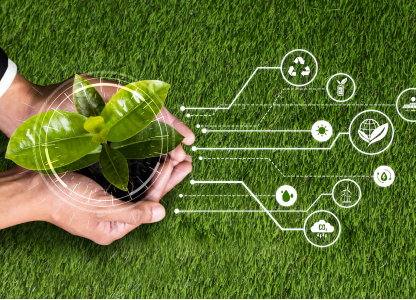
Learn How Sustainable Methods Are Reshaping Textile Manufacturing for the Better
The textile industry is undergoing a quiet but powerful revolution. In the face of growing environmental challenges, sustainability has evolved from a niche ideal to a critical requirement. From reducing chemical use to optimizing water and energy consumption, the global textile supply chain is shifting toward eco-conscious practices—and digital printing technologies are leading the way.
At the heart of this transformation lies a combination of innovation, responsibility, and long-term vision. Companies like Orange O Tec are helping manufacturers transition toward cleaner, smarter, and more efficient production methods without compromising on output, speed, or creativity.
The Environmental Impact of Traditional Textile Production
Textile manufacturing has long been recognized as one of the most resource-intensive industries. Conventional dyeing and printing processes can consume thousands of liters of water per day and often rely on harmful chemicals that contaminate waterways and soil. Add to this the heavy energy demands of heating, drying, and washing, and the result is a significant carbon footprint.
Key challenges include:
- Excessive water use in dyeing and rinsing
- High volumes of chemical effluents
- Heavy energy consumption during heat-setting and drying
- Fabric waste during sampling and overproduction
- Airborne pollutants from solvent-based inks and dyes
Sustainable solutions are urgently needed—not just as a response to regulatory pressure, but as a vital investment in the future of textile production.
The Shift Toward Eco-Friendly Alternatives
Eco-friendly practices are now being embedded across every stage of textile production. These include:
1. Waterless or Low-Water Printing Technologies
Digital textile printing printers —particularly pigment-based and sublimation printing—require minimal to no water compared to traditional rotary screen printing. This drastically reduces wastewater discharge.
2. Energy Efficiency
New-generation printers incorporate infrared drying systems and smart sensors to optimize heat output, significantly cutting energy use. Built-in automation also reduces idle time and repetitive runs, improving energy efficiency.
3. Chemical Management
Sustainable ink formulations, such as OEKO-TEX-certified and GOTS-compliant inks, offer safer alternatives with lower VOCs and fewer hazardous chemicals. These are becoming industry standard, especially in global export markets.
4. Waste Reduction
Digital printing enables precise control over design placement and ink consumption. This not only reduces fabric wastage but also minimizes leftover inventory, since shorter and on-demand print runs are easier to manage.
5. Recycling & Reuse
Many manufacturers are now reusing treated water within their facilities and exploring fabric recycling methods. Additionally, modern printers are designed to support bio-based or recycled fabrics like rPET.
How Digital Printing Supports Sustainability
The adoption of digital printing in textile production is arguably one of the most impactful green innovations of the last two decades. Here’s why:
- Shorter lead times: Reduces overproduction and unnecessary warehousing.
- Zero screens: Eliminates screen prep, which typically requires large volumes of water and emulsion chemicals.
- Precision ink usage: Reduces over-inking, bleeding, and misprints.
- Compact setups: Digital printing requires smaller footprints, enabling more sustainable production layouts.
Digital printing is not just cleaner—it’s also more agile, helping manufacturers adapt to fast-changing fashion cycles without building waste into the process.
Orange O Tec: Pioneering Sustainable Innovation in Digital Textile Printing
As a forward-thinking company in the textile printing sector, Orange O Tec is deeply committed to empowering eco-conscious production through innovation and reliability.
Sustainable Technology in Every Printer
Orange O Tec offers a wide range of advanced digital textile printers—such as the FabPro series, Kolorado Alpha 15, Homer K32, and FoilJet 16—each engineered for low-waste, high-efficiency output. These printers are equipped with features like:
- Auto-cleaning and moisture control systems that extend printhead life and reduce consumable use
- Energy-efficient infrared or air-heat dryers that deliver faster drying with lower thermal load
- Precision-engineered transport systems that minimize misfeeds and fabric loss
- Support for water-based and sublimation inks, with minimal environmental impact
“Made in India” with a Green Vision
Many of Orange O Tec’s printers are developed and manufactured in India—a strategic decision that reduces the carbon footprint associated with importing heavy industrial equipment. The brand’s “Made in India” ethos aligns seamlessly with sustainable manufacturing goals and contributes to the country’s growing push toward green industrialization.
Thoughtful Partnerships and Support
Orange O Tec also provides customers with end-to-end consultation and post-installation training to help them operate printerry in the most sustainable and cost-effective manner. From ink recommendations to software setups that optimize output and reduce reprints, Orange O Tec ensures that sustainability is not just a feature—but a practice.
Real Impact: What This Means for Textile Manufacturers
For businesses in fashion, sportswear, and home textiles, adopting eco-friendly practices isn’t just about checking a compliance box—it’s about future-proofing operations. Brands are increasingly demanding sustainable sourcing from their suppliers, and consumers are voting with their wallets for responsible production.
By switching to eco-smart technologies like those offered by Orange O Tec, manufacturers can:
- Lower operational costs by reducing energy and ink usage
- Meet export and certification standards faster
- Improve production flexibility with shorter runs and faster changeovers
- Build brand reputation around clean, future-ready manufacturing
The Road Ahead
Eco-friendly textile production is no longer optional—it’s the way forward. As governments tighten environmental regulations and buyers demand traceability, digital printing backed by sustainable engineering will become the cornerstone of textile operations worldwide.
Orange O Tec stands at the forefront of this transformation. With a strong foundation in digital innovation, reliable engineering, and customer-centric service, the company is helping textile manufacturers print smarter, greener, and more profitably.
In a world that increasingly demands responsibility and results, Orange O Tec delivers both—with every print, every run, and every innovation.
